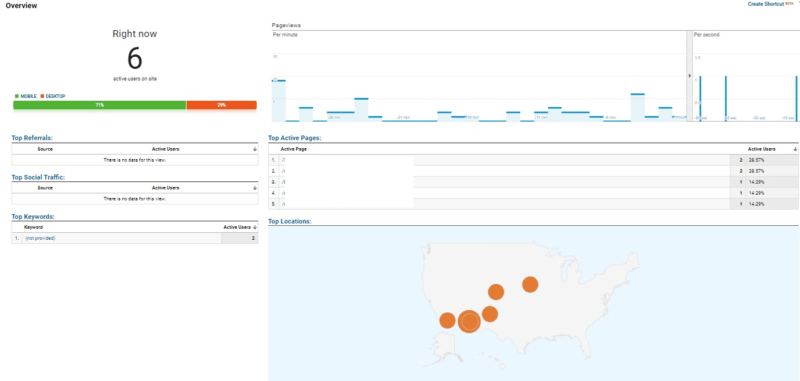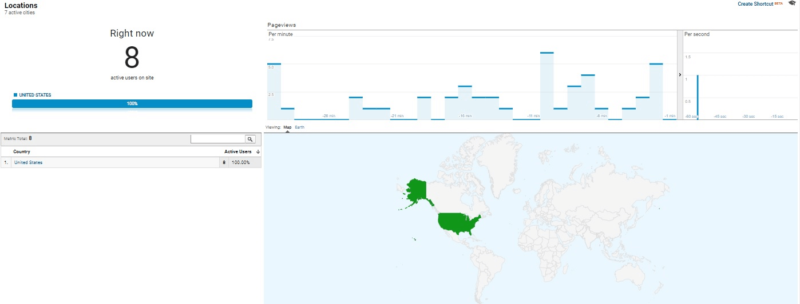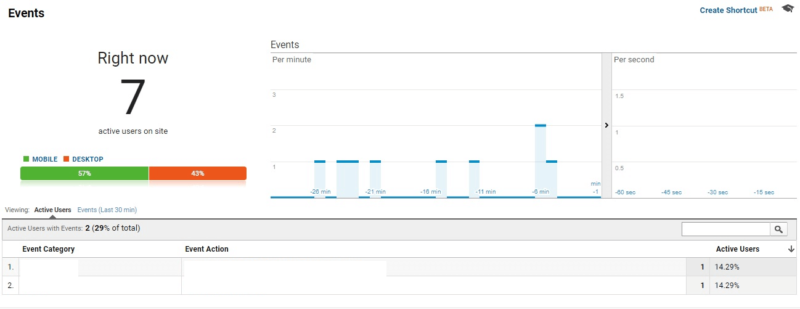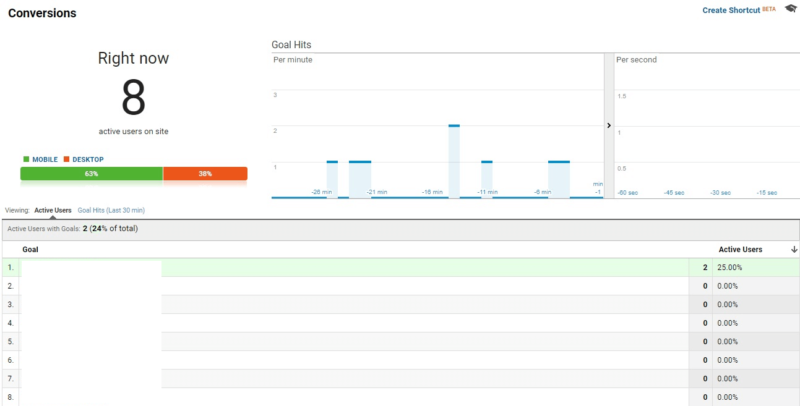How to capitalize on the competitive advantage of real-time data analysis
Contributor Stela Yordanova explains how to capitalize on the competitive advantage provided by real-time data analysis.
 The Real-Time report in Google Analytics allows you to monitor website activity as it actually occurs on your website or app. The report is continuously updated, and website activity is reported just a few seconds after it happens. This immediacy of real-time data provides digital marketers with unique and valuable insights.
The Real-Time report in Google Analytics allows you to monitor website activity as it actually occurs on your website or app. The report is continuously updated, and website activity is reported just a few seconds after it happens. This immediacy of real-time data provides digital marketers with unique and valuable insights.
There are many ways you can use real-time reporting such as gauging the effectiveness of your mobile app through event tracking and monitoring one-day promotions on your site. Today I want to focus on and recommend marketers use Google’s Real-Time report for three specific things:
- To quickly monitor results for short-term campaigns or promotional efforts.
- To track immediate interaction with newly published content.
- To test and verify Google Analytics and Google Tag Manager implementation.
Real-Time Overview
The Real-Time report contains an Overview plus five specific reports:
- Location report.
- Traffic Sources report.
- Content report.
- Events report.
- Conversion report.
Each report is described below with suggestions on how marketers should use them to analyze real-time website data and improve marketing results.
Real-Time Overview
As the name suggests, The Overview provides a summary of what is currently happening on your website. The Overview shows the total number of active users, device types and active pages. The report also provides a snapshot of user locations and top referrers.
TIP: Use the Overview report to quickly see (at-a-glance) how just-launched campaigns and just-posted content are impacting website activity.
Real-Time Locations report
The default view of the Real-Time Locations report shows a map and a list of countries where your active users currently reside. You can dig deeper and look at regions and cities for each country and see how many of your web pages were viewed from each location in 30-minute increments.
TIP: Use this report when launching geo-targeted campaigns. You can immediately see response and engagement rates in specific locations and modify your targeting, if needed, to quickly improve results.
Real-Time Traffic Sources report
Use this report to monitor which sources and mediums are responsible for sending you the people currently on your site. This allows you to assess short-term campaigns and monitor how traffic flows through different marketing channels.
TIP: After launching an ad campaign or a social promotion, this can be a great way to quickly verify that traffic is indeed flowing in from the expected channels. And if it’s not, adjust your campaign.
Real-Time Content report
If you want to know which of your web pages are getting the most “looks” during the past 30 minutes, the Content report will tell you. This real-time report shows the pages users are currently on and includes the page URL, the page title, and the percentage of active users on each page.
TIP: This report is particularly useful for blogs and informational websites, as marketers can monitor content engagement and performance. It is also useful to understand user flow and see how visitors move between pages on your website. The Content report will tell you if a specific piece of content suddenly receives a lot of attention, perhaps due to a timely issue or a current event.
Real-Time Events report
The Real-Time Events report provides data about active user engagement like button clicks, downloads or video viewing. This report allows marketers to immediately see if users are engaging with your website as expected, as well as testing auto event implementation. This real-time report contains data about the event category and the event action but does not show event label data.
TIP: Immediately after launching a campaign, check this report to verify users are finding your call-to-action on the landing page. Are they taking action? Are they converting? Knowing and understanding this sooner, rather than later will allow you to make improvements and improve ROI quickly.
Real-Time Conversions
In this report, you can monitor what actions are completed by users that are currently active on your website. The report contains data by goal name, the number of goal completions, and the percentage of active users for each goal. Overall conversion activity by goal is available as well as seeing the number of conversions in the last 30 minutes by goal.
TIP #1: This report is great to test conversion goal configurations, as well as verifying that just-launched campaigns are actually driving conversions.
Use Real-Time reports for testing
All of Google’s Real-Time reports are valuable but, when it comes to testing, I feel they are invaluable. You can quickly test implementations and changes to your website using any or all of the report available.
For example, if you were implementing new events or conversion goals, you can compare the desired actions on your website to the Real-Time reports to verify that your events and goals are where you want them to be and working properly. Here’s how to do this.
After you set up an event tag in Google Tag Manager, go into preview mode and navigate to Real-Time in Google Analytics. To find yourself, look for users in your area. (Note: if you are excluded as internal traffic you’d want to look at the unfiltered view.)
Once you have filtered all the reports for your session, perform the necessary actions on your website to test your tag implementations to verify that everything is working as expected.
Keep in mind that if you click on a category in any of the Real-Time reports it filters the other reports by this category. For example, if you navigate to traffic from Chicago in the Location report and then go to Traffic Sources report, it will only show traffic sources for current users in Chicago, not all users.
Capitalize on Real-Time insights
Historical data is still the primary way to analyze website behavior and long-term trends, but many marketing efforts can be significantly and quickly improved via real-time monitoring and analysis.
Social media efforts can be instantly adjusted based on channel and location data. Content can be quickly revised based on interaction and engagement data. The impact of offline marketing programs can be seen nearly immediately, and the influence of timely news and current events can be identified in real time.
Don’t wait for weekly or monthly results reports to start optimizing your marketing programs! Capitalize on the competitive advantage provided by real-time data analysis.
Contributing authors are invited to create content for Search Engine Land and are chosen for their expertise and contribution to the search community. Our contributors work under the oversight of the editorial staff and contributions are checked for quality and relevance to our readers. The opinions they express are their own.
Related stories
New on Search Engine Land






